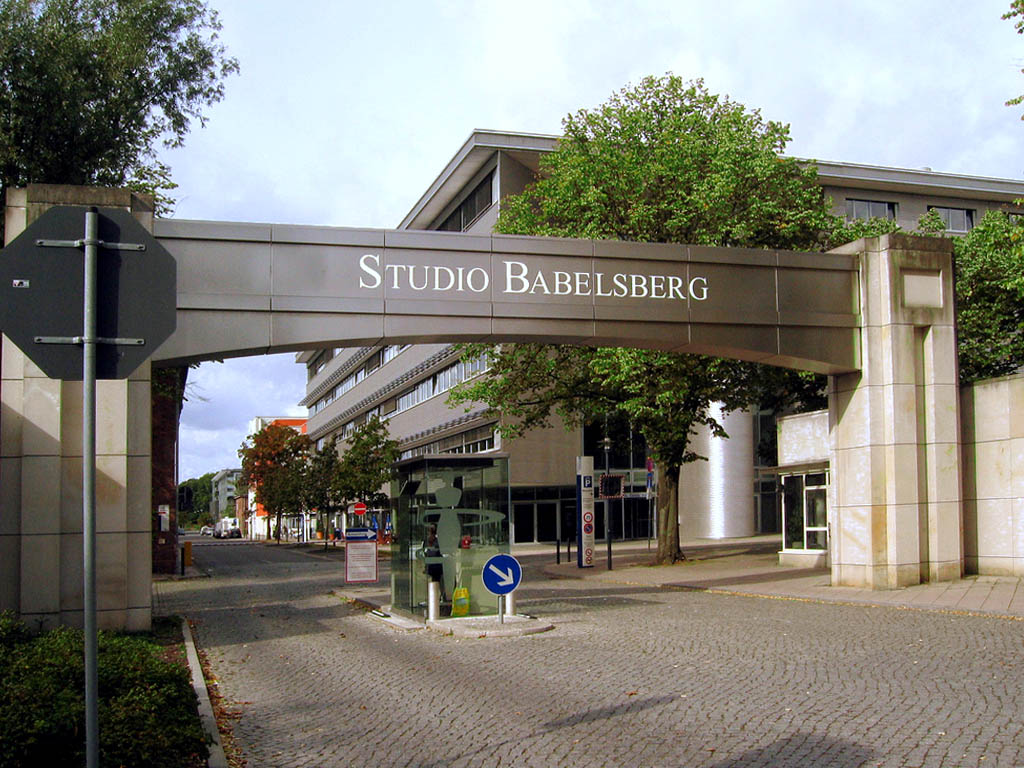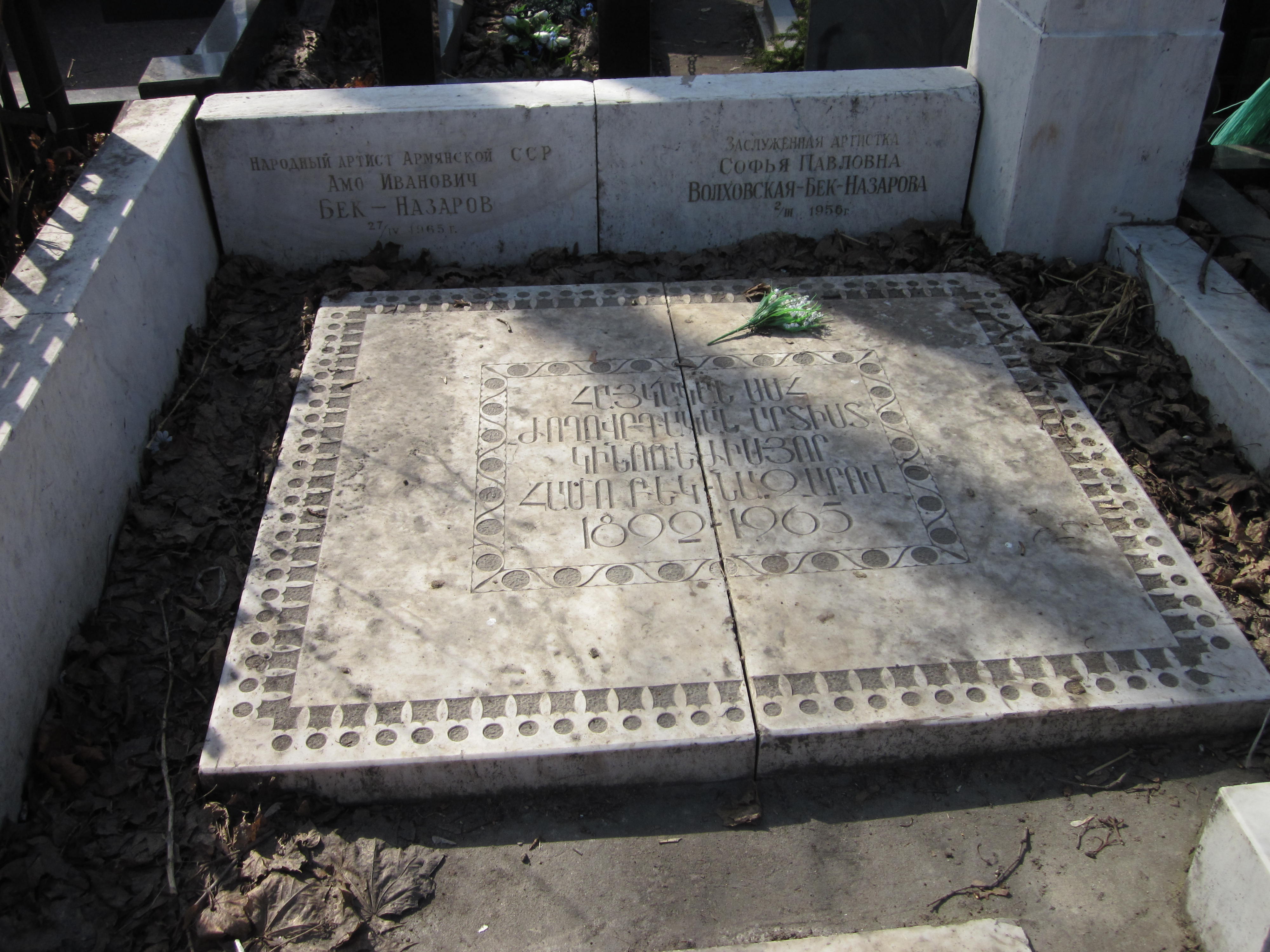|
Armenfilm Films
Armenfilm (russian: Арменфильм; hy, Արմենֆիլմ), also known as Hayfilm ( hy, Հայֆիլմ), is an Armenian film studio located in Yerevan. The studio was founded on 16 April 1923 as a production unit of the Soviet State Cinema Organization, with Daniel Dznuni as the first director. Armenfilm was sold by the state to private investors in 2005 with a long list of conditions to revitalize the studio's equipment and produce new content. It was renamed as CS Film Studios but failed to produce the required new feature films. In 2015, the Government of Armenia decided that the new management had failed to satisfy the conditions of the sale and moved to reclaim the studio's assets. History *1923 - The organization "Goskino" was created within the People's Commissariat of Education of Armenia, as well as the association "Gosfotokino." *1928 - The studio was renamed as "Armenkino." *1938 - The studio was renamed as "Yerevan Film Studio." *1957 - The studio was renamed ... [...More Info...] [...Related Items...] OR: [Wikipedia] [Google] [Baidu] |
Film Studio
A film studio (also known as movie studio or simply studio) is a major entertainment company or motion picture company that has its own privately owned studio facility or facilities that are used to make films, which is handled by the production company. Most firms in the entertainment industry have never owned their own studios, but have rented space from other companies. There are also independently owned studio facilities, who have never produced a motion picture of their own because they are not entertainment companies or motion picture companies; they are companies who sell only studio space. Beginnings In 1893, Thomas Edison built the first movie studio in the United States when he constructed the Black Maria, a tarpaper-covered structure near his laboratories in West Orange, New Jersey, and asked circus, vaudeville, and dramatic actors to perform for the camera. He distributed these movies at vaudeville theaters, penny arcades, wax museums, and fairgrounds. The first ... [...More Info...] [...Related Items...] OR: [Wikipedia] [Google] [Baidu] |
Hamo Beknazarian
Hamo Beknazarian ( hy, Համո Բեկնազարյան; russian: Амбарцум Бек-Назаров; 19 May 1891 – 27 April 1965), also known as Hamo Bek-Nazarov or Amo Bek-Nazarian, was a Soviet Armenian film director, actor and screenwriter. Biography Hamo Beknazarian was born on 19 May 1891 in Yerevan, the capital of Armenia, Russian Empire. His career in cinema started in 1914, when a casual acquaintance offered him a part in a film. Since that part, he decided to pursue a career in cinema. Between 1914 and 1918, he played about 70 parts, becoming a popular actor in pre-Revolutionary Russian film. In 1920, instead of going to Armenia as he had decided, he went to Tbilisi where he developed a film department for the Georgian Commissioner's office of Public Education. He shot many films in Tbilisi, including ''Patricide'' and ''Lost Treasures''. In 1925, he shot his first Armenian film and moved to Armenia. In 1933, he shot the first Armenian sound film ''Pepo''. In 1 ... [...More Info...] [...Related Items...] OR: [Wikipedia] [Google] [Baidu] |
Yerevan
Yerevan ( , , hy, Երևան , sometimes spelled Erevan) is the capital and largest city of Armenia and one of the world's oldest continuously inhabited cities. Situated along the Hrazdan River, Yerevan is the administrative, cultural, and industrial center of the country, as its primate city. It has been the capital since 1918, the fourteenth in the history of Armenia and the seventh located in or around the Ararat Plain. The city also serves as the seat of the Araratian Pontifical Diocese, which is the largest diocese of the Armenian Apostolic Church and one of the oldest dioceses in the world. The history of Yerevan dates back to the 8th century BCE, with the founding of the fortress of Erebuni in 782 BCE by King Argishti I of Urartu at the western extreme of the Ararat Plain. Erebuni was "designed as a great administrative and religious centre, a fully royal capital." By the late ancient Armenian Kingdom, new capital cities were established and Yerevan declined in ... [...More Info...] [...Related Items...] OR: [Wikipedia] [Google] [Baidu] |
Armenia
Armenia (), , group=pron officially the Republic of Armenia,, is a landlocked country in the Armenian Highlands of Western Asia.The UNbr>classification of world regions places Armenia in Western Asia; the CIA World Factbook , , and ''Oxford Reference Online'' also place Armenia in Asia. It is a part of the Caucasus region; and is bordered by Turkey to the west, Georgia to the north, the Lachin corridor (under a Russian peacekeeping force) and Azerbaijan to the east, and Iran and the Azerbaijani exclave of Nakhchivan to the south. Yerevan is the capital, largest city and the financial center. Armenia is a unitary, multi-party, democratic nation-state with an ancient cultural heritage. The first Armenian state of Urartu was established in 860 BC, and by the 6th century BC it was replaced by the Satrapy of Armenia. The Kingdom of Armenia reached its height under Tigranes the Great in the 1st century BC and in the year 301 became the first state in the world to a ... [...More Info...] [...Related Items...] OR: [Wikipedia] [Google] [Baidu] |
Film Industry
The film industry or motion picture industry comprises the technological and commercial institutions of filmmaking, i.e., film production companies, film studios, cinematography, animation, film production, screenwriting, pre-production, post production, film festivals, distribution, and actors. Though the expense involved in making films almost immediately led film production to concentrate under the auspices of standing production companies, advances in affordable filmmaking equipment, as well as an expansion of opportunities to acquire investment capital from outside the film industry itself, have allowed independent film production to evolve. In 2019, the global box office was worth . When including box office and home entertainment revenue, the global film industry was worth in 2018. Hollywood is the world's oldest national film industry, and largest in terms of box office gross revenue. Indian cinema is the largest national film industry in terms of the number ... [...More Info...] [...Related Items...] OR: [Wikipedia] [Google] [Baidu] |
Production Company
A production company, production house, production studio, or a production team is a studio that creates works in the fields of performing arts, new media art, film, television, radio, comics, interactive arts, video games, websites, music, and video. These groups consist of technical staff to produce the media, and are often incorporated as a commercial publisher. Generally the term refers to all individuals responsible for the technical aspects of creating a particular product, regardless of where in the process their expertise is required, or how long they are involved in the project. For example, in a theatrical performance, the production team has not only the running crew, but also the theatrical producer, designers and theatrical direction. Tasks and functions The production company may be directly responsible for fundraising the production or may accomplish this through a parent company, partner, or private investor. It handles budgeting, scheduling, scripting, the ... [...More Info...] [...Related Items...] OR: [Wikipedia] [Google] [Baidu] |
State Committee For Cinematography
Goskino USSR (russian: link=Yes, Госкино СССР) is the abbreviated name for the USSR State Committee for Cinematography (Государственный комитет по кинематографии СССР) in the Soviet Union. It was a central state directory body of Soviet film production. History The first main film production and distribution organisation in the Russian Soviet Federative Socialist Republic until 1924 was Goskino; this was succeeded by Sovkino from 1924 to 1930, and then replaced with Soyuzkino in 1930 chaired by Martemyan Ryutin, which had jurisdiction over the entire USSR until 1933, when it was then replaced by GUKF (The Chief Directorate of the Film and Photo Industry, largely headed by Boris Shumyatsky); which, again, was replaced in 1939 by the Central Committee for Cinema Affairs until 1946, when it was replaced by the Ministry of the Cinema. The responsible heads of Soviet Cinema: * 1919–1921 Dmitry Leshchenko, Dmitry Ilyich Leshchenk ... [...More Info...] [...Related Items...] OR: [Wikipedia] [Google] [Baidu] |
Government Of Armenia
A government is the system or group of people governing an organized community, generally a state. In the case of its broad associative definition, government normally consists of legislature, executive, and judiciary. Government is a means by which organizational policies are enforced, as well as a mechanism for determining policy. In many countries, the government has a kind of constitution, a statement of its governing principles and philosophy. While all types of organizations have governance, the term ''government'' is often used more specifically to refer to the approximately 200 independent national governments and subsidiary organizations. The major types of political systems in the modern era are democracies, monarchies, and authoritarian and totalitarian regimes. Historically prevalent forms of government include monarchy, aristocracy, timocracy, oligarchy, democracy, theocracy, and tyranny. These forms are not always mutually exclusive, and mixed ... [...More Info...] [...Related Items...] OR: [Wikipedia] [Google] [Baidu] |
Gerard Cafesjian
Gerard Leon Cafesjian ( hy, Ջերարդ Լեւոն Գաֆէսճեան, 26 April 1925 – 15 September 2013) was a businessman and philanthropist who founded the Cafesjian Family Foundation (CFF), the Cafesjian Museum Foundation (CMF) and the Cafesjian Center for the Arts. Early years, military service and professional career Cafesjian was born on April 26, 1925, in the Bensonhurst neighborhood of Brooklyn, New York. His parents had immigrated to the United States preceding the Armenian genocide by the Turks. After amphibious training, he served as a sailor in World War II aboard J. P. Morgan's yacht, the ''Corsair III'', built in 1895 and renamed the USS ''Oceanographer''.The ship did extensive survey work in and around Guadalcanal and other Solomon Islands in 1943 and 1944. He also served aboard the USS ''Andres'' (DE45), a destroyer escort for convoys from the United States to North Africa in late 1944 and 1945. When he returned after the war he married Cleo Thomas, a nur ... [...More Info...] [...Related Items...] OR: [Wikipedia] [Google] [Baidu] |
Armenian National Cinematheque
The Armenian National Cinematheque () is a film archive located in Yerevan, Armenia. History The archive was founded in 1991, by Garegin Zakoyan, the head of the Film and Television department of the Art Institute of the Armenian National Academy of Sciences. See also * Armenfilm * Cinema of Armenia * Cinematheque * List of film archives This is a list of film archives and cinematheques. Film archives collect, restore, investigate and conserve audiovisual content like films, documentaries, television programs and newsreel footage. Often, every country has its own film archive to ... * Moscow Cinema * National Archives of Armenia External links National Cinema Center of Armenia References Archives in Armenia Film archives in Asia Film archives in Europe {{Portal bar, Cinema, Film ... [...More Info...] [...Related Items...] OR: [Wikipedia] [Google] [Baidu] |
Cinema Of Armenia The cinema of Armenia was established on 16 April 1923, when the Armenian State Committee of Cinema was established by government decree. The National Cinema Center of Armenia (NCAA), founded in 2006, is the governing body of film and cinema in Armenia. The NCAA preserves, promotes and develops Armenian cinematography and provides state financial support to full-length feature, short and animation projects. The Director of the NCCA is Shushanik Mirzakhanyan, and the headquarters are located in Yerevan. History The first Armenian film with Armenian subject called "Haykakan Sinema" was produced in 1912 in Cairo by Armenian-Egyptian publisher Vahan Zartarian. The film was premiered in Cairo on 13 March 1913. In March 1924, the first Armenian film studio: ''Armenfilm'' ( hy, Հայֆիլմ "Hayfilm," russian: Арменкино "Armenkino") was established in Yerevan, starting with ''Soviet Armenia'' (1924), an Armenian documentary film. '' Namus'' was the first Armenian silent bla ... |


